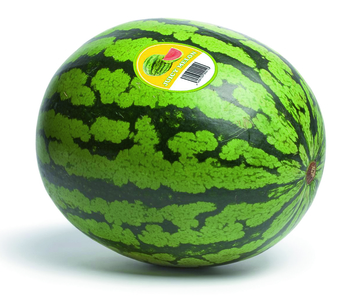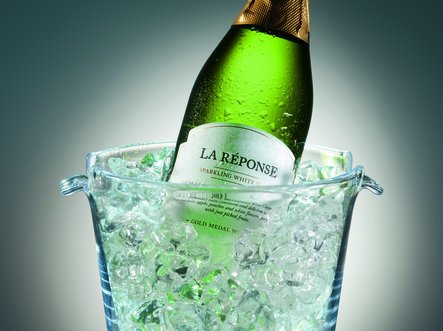Avery Dennison’s Aqua Stick range can withstand significant temperature changes and condensation
There are a number of factors to consider when choosing a label stock. Nessan Cleary reports on the latest developments.
There are many different kinds of labels, from those used for functional and transit functions through to those that are an integral part of the packaging. The design of a label can play a major part in helping to sell a product, but as well as looking good, those labels also have to be cost effective and capable of performing over time in sometimes challenging environments. So it is important to choose the right substrate that can both convey the message and remain attached to the product.
The biggest growth area is self-adhesive labels, which are made up of a number of elements. The most obvious is the face stock, which must be suitable for working with different printing inks, and will determine the look and feel of the label. But the adhesive is arguably more important as it determines what surfaces the label can be applied to. The final element is the release liner, which is usually coated with a silicone release layer so that the label does not stick to the liner as it unrolls, and which is essential for the smooth application of the label.
There is a tremendous range of face stocks, though it mostly comes down to a choice between paper and film. Paper can be coated for better performance, uncoated for lower prices, or have a specialised finish, such as a metallised effect or foil, which gives a high quality look for luxury goods. Richard Hart, area sales manager for MACtac, said that the paper market is much bigger – around four times the size for MACtac mainly because of price – but that more and more people are looking at films.
For films, there is a basic choice between polyethylene, which is reasonably cost effective and easily incinerated, polypropylene, which is widely used on bottles and high end cosmetics, and PET, which is highly resistant to heat, chemicals and UV light and is usually clear for a no-label look.
When it comes to the adhesives, there is an even bigger choice. Most are permanent, designed to stay on the product regardless of the ambient temperature, or whether they are wet or covered in chemicals. Others are designed to be easily removed without leaving any residue behind. Most are synthetic, including most of those that are said to be rubber-based. Some are acrylic, which tends to last over a longer period of time, and to be more resistant to chemicals and UV light. There are a growing number of water-based adhesives, which are more environmentally friendly, and of solvent-based adhesives, which have exceptionally good performance particularly for extremes of temperature.
Most label substrates mix and match between these different elements, so there is theoretically room for a large volume manufacturer to specify a particular face stock and adhesive combination.
What’s available?
Food and beverages are the main applications for self-adhesive labels, so not surprisingly these markets account for most of the more recent label substrates that have appeared.
Avery Dennison’s AquaProof takes a dual approach to face stocks, being a film that is designed to look like a conventional premium paper label. It is designed for labelling wine bottles and can withstand the effects of ice and water, without showing any wrinkles, pleats or bubbling when bottles are taken out of either cooling cabinets or ice water. It combines Fasson S2047N adhesive with a pearlescent, embossable film to give the feel of a textured paper product and works with most print processes, including flexo, offset, hotfoil and silk screen.
Flexcon has developed its SureFlex range of biaxially-oriented polypropylene (BOPP) films, which are aimed mainly at the pharmaceutical, beauty, food and beverage markets. These are clear films that use a new higher-shear permanent acrylic adhesive, designed to work better with irregular surfaces whilst avoiding any build up of adhesive on presses and die-cutting equipment. It works with squeezable tubes but can also be used as front and back wraparound labels. It has a low haze level to give a see-through ‘no label’ look on HDPE and PET containers. It will work with most inks, including UV and solvent for flexo and screen printing.

UPM’s RafFruit has been designed for labelling rough food produce
Acucote added three new thinner polypropylenes to its range at the end of last year. These are said to be more cost effective than alternatives, having lower raw material cost, potential efficiency cost reductions and an improved environmental footprint. They include a new 2.4 mil white topcoat, a cost-effective substitute for Acucote’s current 2.6 mil white gloss topcoat that maintains the same opacity and top coating. There is also a new 2.6 mil white vision gloss topcoat, which is a mid gloss option between high gloss and matte finish face stocks.
For the variable print market, Acucote now stocks 2.6 mil white premium thermal transfer. This is an alternative to the 3 mil white thermal transfer, having a smoother surface that results in sharper imaging through thermal transfer printers and much improved flexo printability.
Ritrama has launched a new top coating for its food labelling products. This is fully compliant with the major directives governing the food industry: ISEGA, the BfR (German Recommendations on Food Contact Materials) and EU regulations for direct contact to dry and moist foodstuff as well as US standard FDA (Food and Drugs Administration). It is certified to withstand all the conditions normally found in the food industry, including application to cold and moist surfaces, contact with fatty substances and oil and storage at deep freeze temperatures. It is used throughout Ritrama’s food labelling range, which currently includes two polypropylene films, two polyethylenes and a coated paper.
Last year UPM Raflatac introduced a thin 50 micron MDO film, Raflax Pro for flexible and squeezable containers. This is available in a clear finish for a ‘no label’ look, as well as with an opaque white background. It uses a PET23 release liner and is up to 40% thinner than a PE85 on HD70. Thin rolls allow for more labels on a roll, so that there is less time wasted on changing rolls.
UPM Raflatac has just launched RafFruit Plus, designed for labelling rough food produce, such as melons. It combines a foil backed paper label face with the RH 5F rubber hotmelt adhesive, which has a high coat-weight for secure adhesion to rough surfaces and has been specially formulated for food safety, though its not uncommon to use adhesives designed for tyres for this kind of produce.
Avery Dennison has developed a range of labels, specifically for tyres, which includes both tread labelling and Thermal Transfer (TT) vulcanisation labels. Tyres pose a particular challenge because the labels need to resist curl and stay in place on a notoriously difficult surface whilst also looking good. The difficulties are compounded by shorter contact times, limited contact surface of tread patterns and lower application pressures.
The range includes PP Tyre 55/60 Top White, made from polypropylene films that resist migration of low molecular weight components and carbon black from the tyre surface so that the labels stay on the tyre. They use a high coat-weight TS8000 adhesive, which can be supplied in a customer-specific gum pattern to minimise the bleeding of the reels.
There is also a TT vulcanisation label, launched at the last Labelexpo, which allows for serialisation of tyres. This uses a rubber-based adhesive, TS8017, which works well with thermal transfer printing and is said to have good heat/abrasion resistance. It has a PET 125 White Top HR face stock that is resistant to the heat of the vulcanisation process.
Adhesives
Some wine bottles present a particular problem to labelling in that condensation forms if they become cooler than their surroundings making it difficult to apply the label properly, which in turn leads to a high number of bottles having to be scrapped.
Avery Dennison has addressed this problem with its Aqua Stick range, which uses a unique Z3338 emulsion adhesive that has been engineered for variable temperature and humid environments to actively absorb any surface moisture present. The adhesive allows inline processing at up to 600 bottles per minute, with consistent label positioning. Even the exit of the labelling tunnel, where further condensation often appears, poses no problem and it can also withstand exposure to an ice bucket or cold box, with the label staying in position. There are three face stocks used with this range in the European market: Fasson 60# Uncoated Litho WS, MaxFlex Bright Silver and Sparkling Asti. According to Fabien Bourgies, global wine and spirits segment director, ‘With Aqua Stick, we are seeing scrap reductions and faster changeovers, with unique improvements to operational performance for these types of applications.’
Its CleanFlake portfolio, a collection of label materials developed to advance the recycling of PET containers, has just won the Environmental Excellence Award for Innovations in Sustainability presented at the US Flexographic Technical Association’s annual Forum, in Baltimore at the end of April. This was the eighth award this range has received since it was first launched last year.
MacTac also has an adhesive for labels used on frozen food products. MF 132 adhesive is designed to withstand very low temperatures, down to -20°C for application, and the labels can be repositioned for up to one hour on glass, aluminium and carton, and up to eight hours on plastic packaging. Labels using this adhesive can be used at even lower temperatures (from -45°C to +60°C). It also works with damp surfaces so is suitable for bottling of products such as fruit juice and milk. It complies with ISEGA regulation (37361 U 14) for direct contact with dry, moist and some fatty foodstuffs and is available with various constructions.
Late last year, UPM Raflatac launched a new adhesive, RP 30 XTRA, for labelling wines, spirits and beverages. This is said to be highly resistant to humid conditions and water so that there is less chance of the labels becoming creased in cold storage or peeling off in ice buckets. The company has also developed a Label Life tool to help its customers understand the life cycle impacts of different labelstock products.






